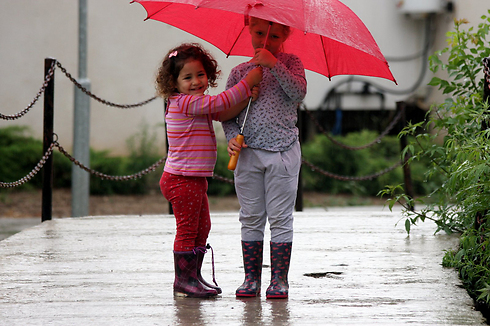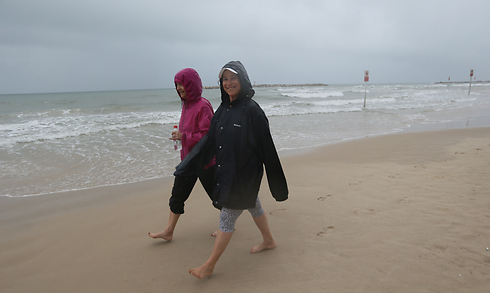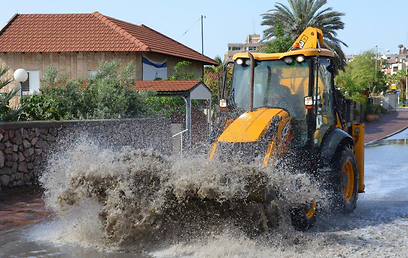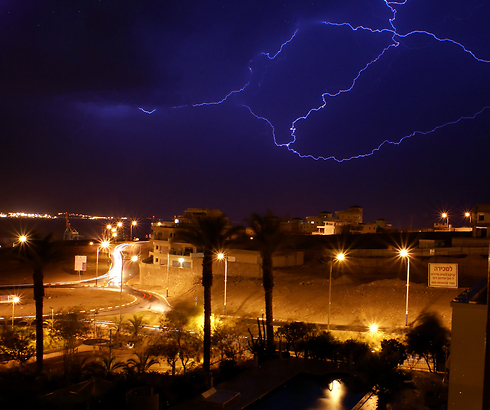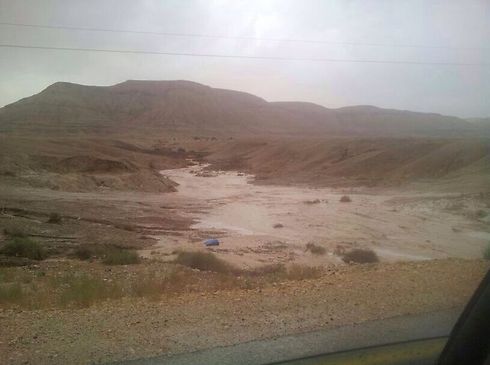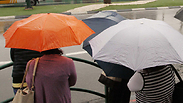
Spring storms bring Israel to a standstill
Homes flooded in Beit Shemesh, roads blocked in south; hundreds of school students left stranded at Masada; tourists rescued from car park in Arava.
One of the rainiest spring days in Israeli history brought swathes of the country to a standstill on Thursday, with gridlocked traffic in the central region, multiple blocked roads in the south and a flooded runway at Eilat airport. The Health Ministry also issued a warning against swimming in the sea, citing a danger of pollution due to erosion.
In the Judean desert, some 200 school students and their parents were stranded at Masada for hours when the road leading to the ancient fortress was closed to traffic. The visitors had arrived at the site in the early hours of the morning, but became stuck when the storms began. Racheli Greenberg from Hadera, who was on the trip by a local school, said that three classes had been stranded.
The highest rainfall was measured in Beit Shemesh, leaving homes flooded, but the real storm was felt in the south. Floods and overflowing streams meant main roads became impassible, and meant the rescue of a group of 100 young hikers in the Arava, among them American and German visitors to Israel.
The rain, along with thunderstorms and strong winds, continued throughout Thursday morning, while temperatures were set to drop considerably during the day.
There was concern of severe flooding in the south, east and center of the country, and many roads in the south were closed. Rescue services evacuated dozens of American tourists who were stranded overnight in a parking lot in the Negev desert due to the rare heavy rain.
Rescue in the Arava
Police spokesman Micky Rosenfeld said that about 70 tourists from the US were stranded there since Wednesday night, when the rain began.
Rescuers evacuated the tourists with helicopters and jeeps Thursday morning. Nobody was injured in the incident, Rosenfeld said. He said the tourists were on a field trip near Hulit when heavy rains prevented them from continuing the journey.
"Some 14mm of rain fell in Ein Yahav (in the Arava) overnight, and the annual average is 28mm," said a volunteer for the rescue services. "They found themselves in the middle of it. Two hours after first light, a helicopter took to the air and evacuated some of them. By early afternoon, we had finished the rescue using 4x4 jeeps. They seemed grateful and emotional."
"This kind of incident is rare, but it happens once every few years," said meteorologist Tzachi Waxman of Meteo-Tech. "It is caused due to a combination of airflow from West Africa and the area of the equator, and an infiltration of cold air from Turkey."
Raanan Ben Tzur contributed to this report










